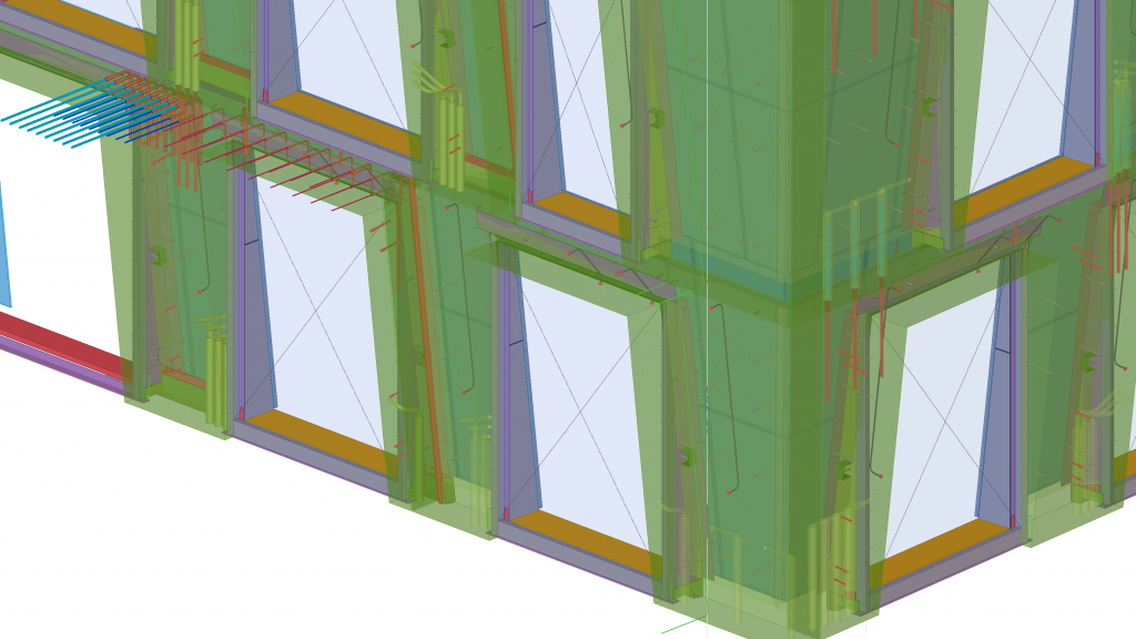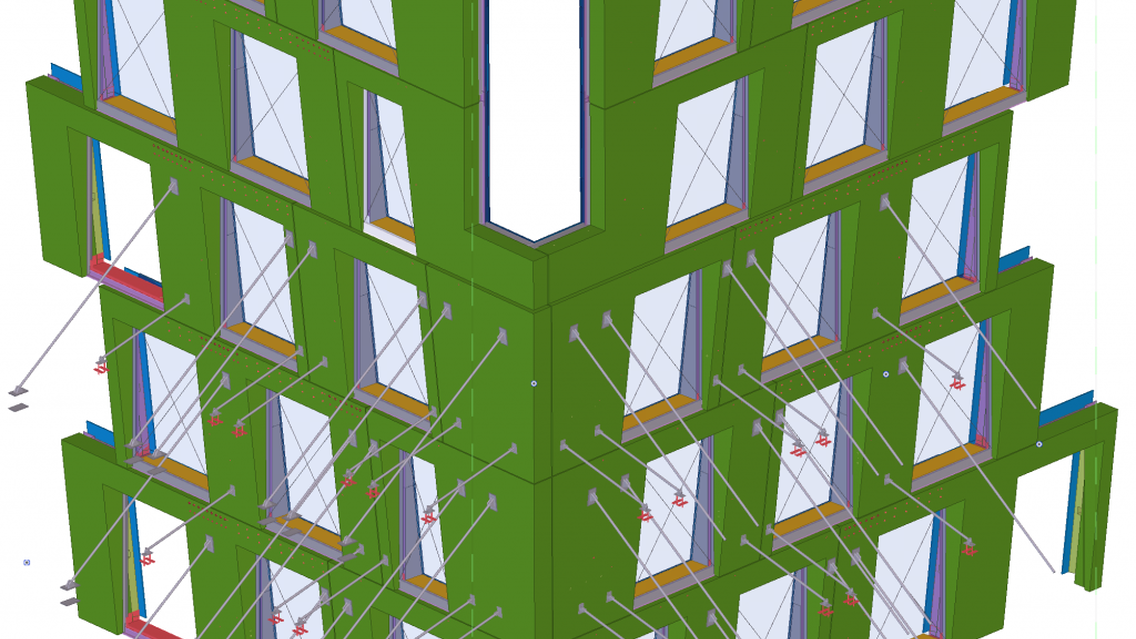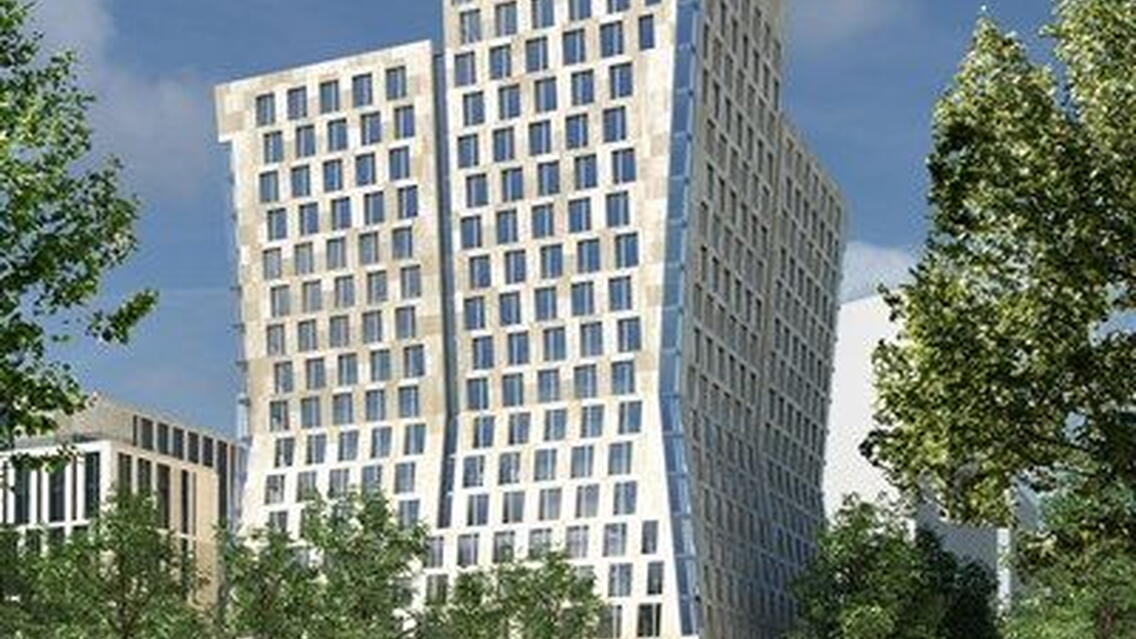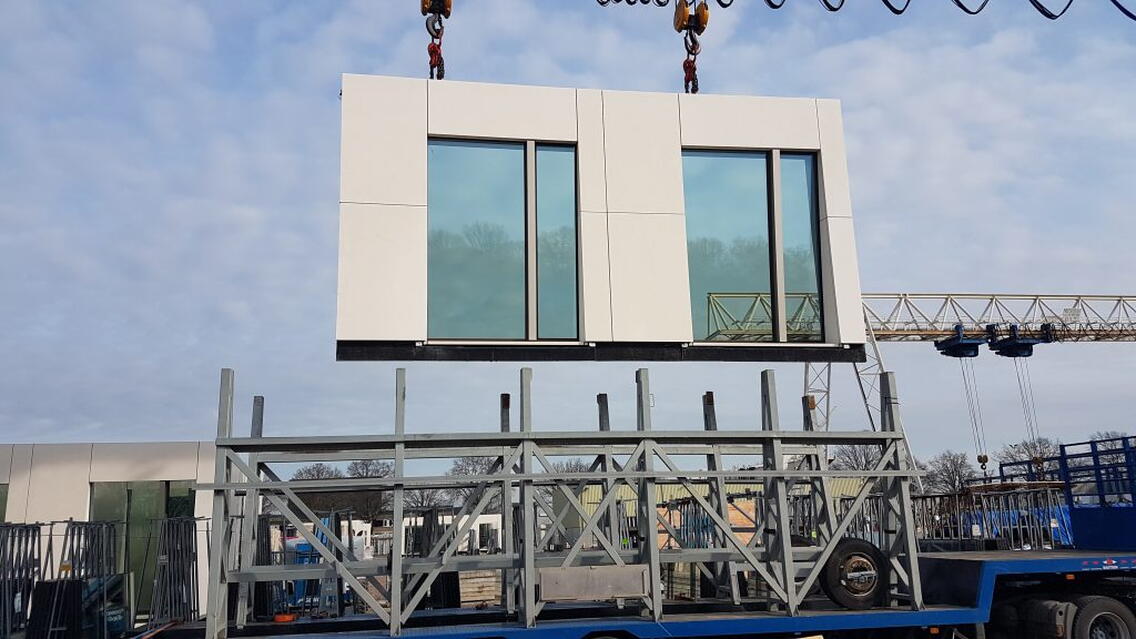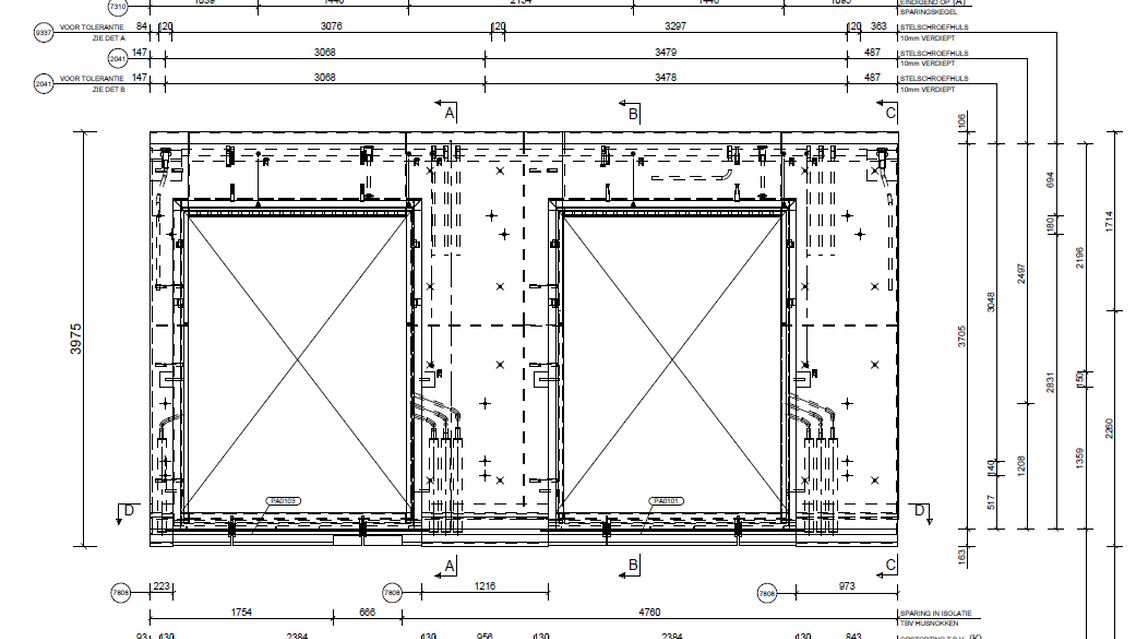Project description
In the middle of the ‘financial mile’ of Amsterdam, in the heart of Zuidas, will soon be the 80-feet high building called Hourglass. According to the name, the building is shaped as an hourglass. It has a timeless design with a marble stone elevation in a light shade/color.
Hourglass will be a multifunctional building with 19 floors, and a total of 42,000 square meters gross floor area, including the office area of 21,000 square meters. On the ground floor, 700 square meters of shopping space, catering space and bicycle parking space will be built. The entire complex is based on a 2-story underground car park with 148 parking spaces.
The completion of the office space is planned before the end of 2019. The hotel apartments will be completed in February 2020. On completion, Hourglass will be awarded the BREEAM-NL Excellent certificate. Besides its prominent location, Hourglass has other special features: apart from the in situ stability cores, nothing is straight in the Hourglass design.
From the third floor, the façades are built from prefab panels, developed by Byldis Prefab and Byldis Facades. The principle of M-shaped panels is used from the bottom to the top of the building, but every prefab panel that is used is different. For example, because of embeds, thickness or plate division. Besides all this, the finishing of the panels is absolutely luxurious.
The whole exterior of the building is made of Turkish limestone. Marble stone which is assembled in the prefab factory in Tilburg, just like the aluminum frames and glazing. The fact that we execute the biggest part of the marble stone elevation in prefab sandwich panels is revolutionary. The panels will be assembled onsite with two tower cranes. All this is only possible because of the good cooperation between Hurks bouw, Byldis prefab and Byldis Facades.
Special challenges
The non-vertical walls were hard to engineer, model and construct. The molds are skewed, and all embeds are on an angle relative to the mold. All reinforcements are modeled accurately and fabricated in-house. The geometric data is sent from Tekla directly to the automated reinforcement facility of Byldis.
What made the project successful
By constructing the building with prefab elements, a high quality and speed of construction can be established. All elements are highly detailed with Tekla, resulting in a high quality model and a reduction of failure costs. All participants in the project are using BIM to obtain an optimal process of engineering and construction.
